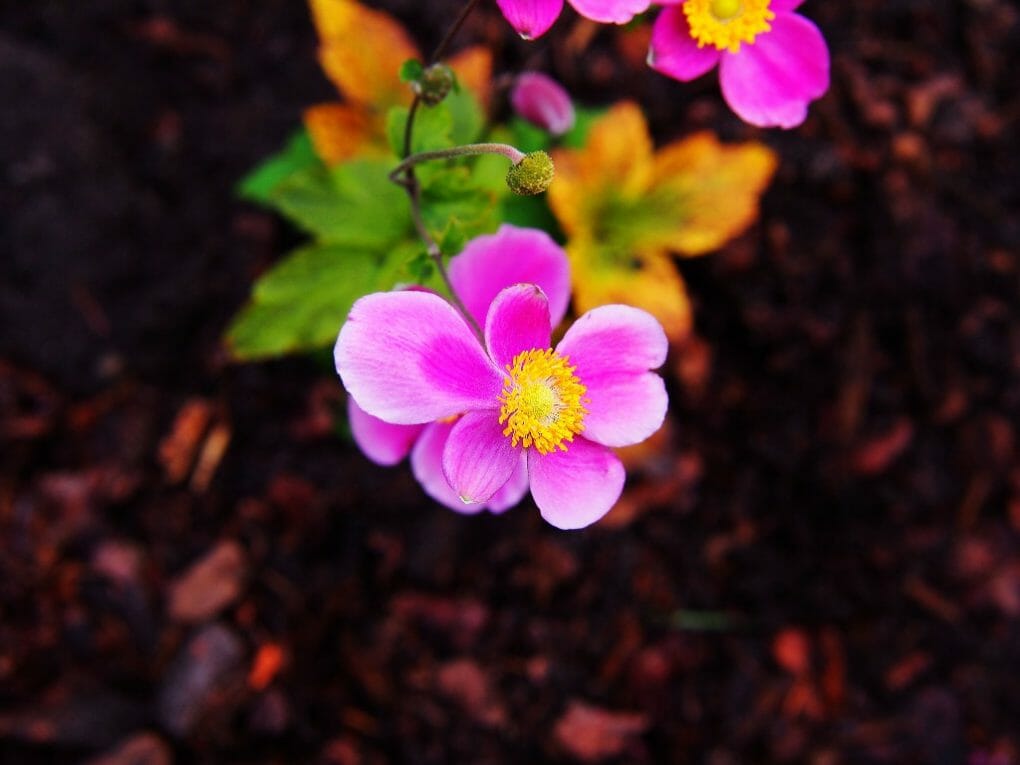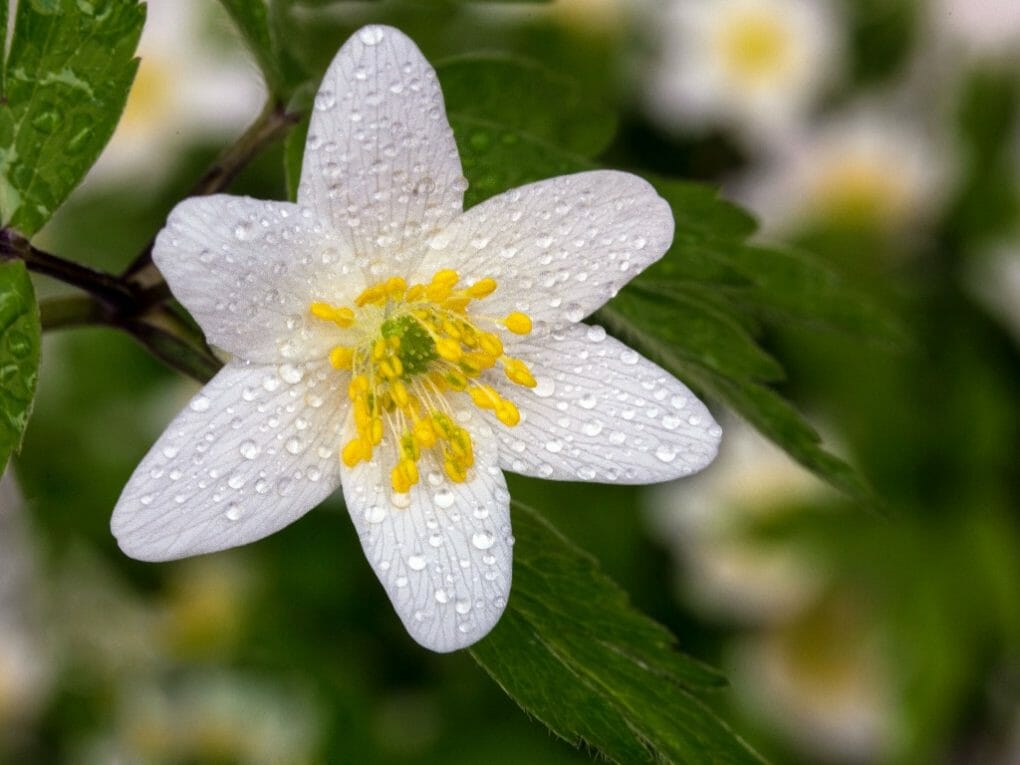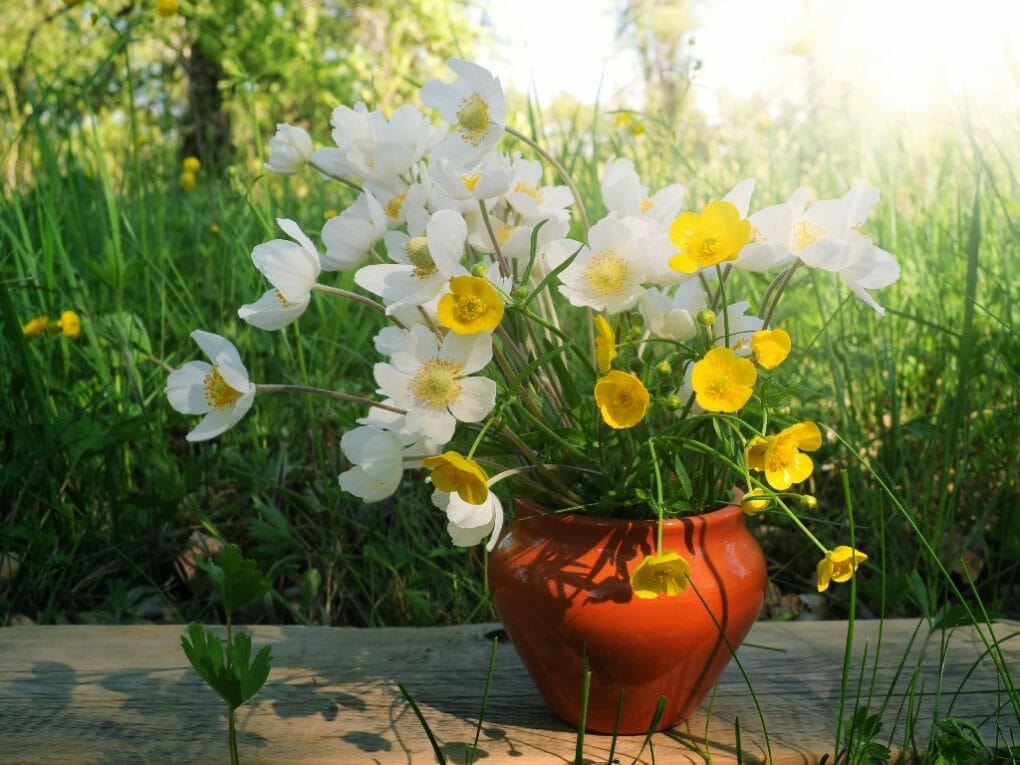How Fast Does Anemone Grow? Anemone Care and Growing Tips for Beginners

Some anemones can grow rapidly, while others can take longer to mature. De Caen and St. Brigid anemones need 12 to 15 weeks to grow and bloom after emerging from the soil. Typically, flowering lasts 3 to 6 weeks. If you notice very little root development, don’t be alarmed. It’s typical for these anemones to generate a little root ball. Generally speaking, anemones will grow more quickly if they are close to other similar plants. Additionally, they will grow faster if the water temperature is higher.
Table of Contents
Anemone Care and Growing Tips
Location
Get a feel for the area while waiting for your corms to arrive. For each corm, you’ll need about 36 square inches of space. To get the most out of your garden, pick a spot with at least six hours of sunlight daily and has amended, well-draining soil. If water tends to pool here, you may want to look elsewhere. The success of your anemone and ranunculus plants depends on how well your soil drains.
Loose soil fertilized with an all-purpose fertilizer and improved with aged compost is ideal. Don’t use anything “hot,” like recently applied nitrogen or herbicides, including fresh manure.
Soil Type
Anemones thrive in soil that is both rich in moisture and has good drainage. Add organic matter to the soil, like compost, leaf mold, or animal manure, before you plant. Although anemones can grow in a wide range of pH, they do best in slightly acidic soil.
Water
Water your anemone sparingly during the early weeks after planting. Water regularly after that, but don’t overwater—allow the top of the soil to dry out between waterings. Allow the occasional flower to wilt in response to over-watering, and then wait until new growth resumes before watering again.
Sunlight
Anemones photosynthesize best in fairly bright light. Providing full sun will help the anemone’s flowers bloom more abundantly, but they can tolerate some shade.
Temperature and Humidity

Moderately cool temperatures are ideal for anemones. Temperatures ranging from 42-50°F (5-10°C) at night and 58-65 °F (14-18°C) during the day are ideal for the majority of plant and animal species. Anemones do not have any specific requirements for humidity as long as they receive the appropriate amount of soil moisture.
Fertilizer
Bone meal can be added to the soil in the fall for spring bloomers or the spring for fall bloomers to increase the soil’s nutrient content and benefit the plants. There is no requirement or suggestion for supplemental feeding.
Anemone Problem and Solution
You can pick off any black or brown spots on the leaves. Also, white mold is a very bad sign. The best way to keep your anemones and ranunculus from getting sick is to keep the soil from getting too wet.
If you live in a humid place like we do, your plants will likely get a few spots. Reduce water and increase airflow by getting rid of weeds. After that, we don’t do anything. Don’t go crazy. Most likely, they’ll be fine. Then they will die.
Pruning
Since anemones typically don’t attain excessive height, they can be left alone in garden maintenance. In contrast, taller varieties may look unkempt after the first frost so early winter pruning may be in order.
How To Plant Anemones
Determine What Type of Anemone
Anemones are available in both corm and tuberous forms. Before planting, it is necessary to determine which type you are dealing with, as the soil preparation methods differ. It’s important to do your research to know what type of anemone you have.
Determine When to Plant
Time your planting according to the blooming schedule of your preferred variety. Planting spring-flowering varieties in the fall is a common practice. These varieties form roots in the fall; in warmer climates, they may also develop some foliage at this time; in the spring, the buds and flowers will emerge. Those who live in cooler climates should wait until spring, after the threat of frost has passed, to plant a fall-flowering variety. Even though Anemones grown in containers can be planted at any time during the growing season, they will flourish if done so in the spring.
Soak Corms for A Few Hours
Before planting a variety that grows from corms, soak them for four to six hours in lukewarm water to stimulate growth.
Soak Tubers Overnight
If you are planting a variety with tubers, soak them overnight. This will accelerate their growth.
Select a Sunny Location
Anemones thrive in areas that receive full sun but may require partial shade in the afternoon to protect them from the sun’s intense rays.
Prepare Your Soil
Both corm and tuberous varieties require abundant nutrients and will thrive in soil amended with compost or other organic matter.
Spacing Them Properly
When ready to plant your tubers, place them three inches deep and three inches apart. About three inches deep and six inches apart, plant corms.
Planting Anemones in Pots

- It would help if you held off until the weather is cold and the soil temperature has dropped to at least 60 degrees Fahrenheit. This will occur in the northern hemisphere in September or October and the southern hemisphere in October or November.
- Find an area that gets full sun or partial shade in your garden.
- Locate a container with good drainage and fill it with loose soil, so water doesn’t pool.
- The anemone bulbs should be planted in the soil about two to three inches deep and as far apart as the bulbs are wide. Since there is typically a shortage of room in containers, you can also try experimenting with placing the bulbs closer together without actually touching them.
- You can either wait until spring to water the containers again or if you live in hardiness zone 3-7, you can water them again and bring them inside, storing them in a cool place such as an unheated garage or basement.
- Don’t prune anemones after they finish flowering. Toss it out once it has turned completely yellow and withered.
